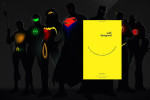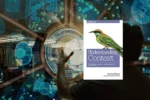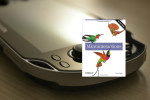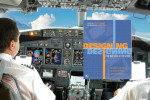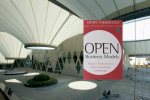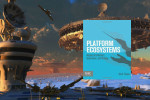Information Spaces
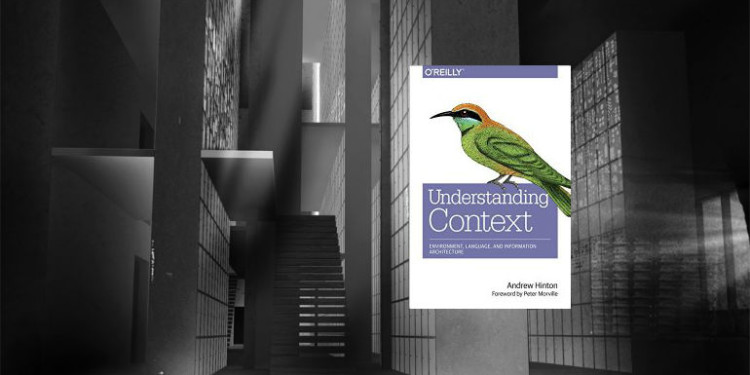
Our lives blend virtual and physical identities, realities, and places. Understanding context requires mapping the changing and overlapping elements of our environments.
Understanding Context: Environment, Language, and Information Architecture by Andrew Hinton
Understanding Context covers a many aspects of context, focused mostly on digital environments. The book brings together intersecting and related fields and theories in sociology, linguistics, and computer science to describe the way we build and understand the places we inhabit. Andrew Hinton devotes the first half of the book to discussing physical, semantic, and digital contexts. In the second half of the book, he describes virtual worlds, places, identities, and habitation. He also discusses social interactions and relationships and the way digital places are constructed and lived in.
Many themes in book provide insights into user experience design. Maps, wayfinding, and placemaking are activities that occur in both physical and virtual environments. Orienting oneself to objects and understanding the environment and its affordances inform both types of design. Although “cyberspace” was once conceived of as a separate space from “meatspace”, the two are intertwined and overlapped to extent that our identities in both realms can become murky.
Information Architecture
the central concern of information architecture is how information creates environmental structure and supports environmental understanding
Throughout the book, Hinton emphasizes that information spaces need signposts and intelligible structures just like physical environments. Information architecture provides maps to these spaces consisting of semantic information.
information architecture is largely concerned with both describing and instantiating new places
Key to great user experience design is understanding the internal maps of the people for whom you are creating a new environment. If you don’t understand how they perceive the space, you can’t compare it to how you are seeking to communicate. The people who are inhabiting the place you designed are creating a map of it in their minds in response to the intentional design you have put forward.
Places and maps
a place is only a place because it affords meaningful action
Hinton gives several interesting examples of how language and place interrelate to define places. Old names for places and things may lose their context due to history and deterioration of buildings and artifacts, but the name nevertheless remain. Likewise, different cultures have different contexts and concerns, defining the way that they describe the world in terms of what is relevant to them.
maps are not neutral information artifacts
Maps are a reflection of the values and judgements of the map makers. To make a map is to make decisions about what to include and what to omit. Political and personal contexts and power structures inform this process and yield a version of reality, not an objective documentation of the world.
Hinton notes that digital places are “porous” and support mashups, feeds, and exchange of information and meaning across domains. Sometimes this is valuable and sometimes it is destructive. He observes that digital places and relationships are “all actually language in various forms–semantic information, enabled by digital technology, resulting in new objects and places in our environment.”
Digital information, when applied to physical environments, creates “augmented” reality–association, representation, and display of information in relation to physical objects. Mobile devices are the primary enabler of this type of mapping and placemaking. These interrelationships between physical and digital environments results in an ever-increasing rate of growth in inhabitable spaces.
Representation of self in digital contexts
Just as there are object-based architectures, so too, there are social architectures. Social networks provide definitions, links, and specific identities we use in our relationships. New personal groupings and interactions have been created based on “sharing” behaviors enabled by software features. Each network selects a slice of our self and seeks to represent, define, and manage it.
Being Grounded
Much as a river needs banks unless it is spread aimlessly like a swamp, the flow of information needs meaningful contexts. Even in an age in which distance has been annihilated, location still matters.
Information technology has become ambient social infrastructure. This allies it with architecture. No longer just made of objects, computing now consists of situations.
–Malcom McCullough
Hinton points out many examples where, due to the malleability of software, companies have shifted the ground by changing invariant structures and destroying orientation and meaning. As new generations of designers and programmers bring new contexts with them to develop products and services, consistency and stability of meaning can be easily lost.
The Materials of Semantic Function
Hinton identifies three components of information architecture: labels / ontology, relationships / taxonomy, rules / choreography.
Labels are a critical component of understanding and representing the meaning of systems, products, and services. An ontology establishes the meaning of collection of the labels in a semantic system. Hinton illustrates this with the example of the Apple iCloud: what is “synching”, where is “here”, where is “there”, what is “in the cloud” or “on your hard drive”?
Taxonomies make relationships with language–they can be lists, hierarchies, facets, or diagrams. They create structures, nesting, and classifications.
Rules coordinate, or choreograph, the movement of agents within an environment. Rules specify the types of interactions and dynamics that can exist within the space. Information architecture is often concerned with the concept of “navigation”, which defines how an agent can move from one place to another.
Narratives
Because humans understand the world through stories, narrative design is a powerful way of creating new experiences. Our bodies are continually making sense of the world with a goal of understanding our relationship to the other objects in the environment. We bring the stories we have experienced and told as context to new situations. In the same way, organizations which create digital spaces are telling stories about themselves as well.
The idea that stories are important leads to the realization that situations are more important than goals when trying to understand the people for whom you are designing a product or service. Rather than identifying discrete goals and designing linear routes to achievement, Hinton suggests that painting a broad picture of the end user’s situation provides a more insightful canvas of opportunity. Moreover, it is not always possible to identify needs very specifically. There is always more to the story than is evident on the surface. To this end, Hinton provides several ways of observing and understanding context.
Collages
a typical User Journey map would be created for only one user at a time, normalizing user action across a linear timeline. A “journey” is typically a story, after all–but as we’ve seen, narrative can leave out a lot of contextual background.
Hinton presents the Situation-Need-Task model as a way of capturing the rich context of an audience or individual. This broadens the focus from standard task analysis to the various factors which influence behavior.
One of the things we discovered was that people’s needs shifted considerably from one moment to the next, depending on what phase they were experiencing.
Any given situation is informed and influenced by a multitude of needs and tasks, all of which must be taken into account when designing an experience, product, or service. A “messy” representation of context is often more realistic. Overlays and overlaps are closer to reality than neat chains from start to goal.
Contextual Design
Order doesn’t equal understanding
–Saul Wurman
Rather than creating linear flows and tabular representations of experiences, systems and information spaces, Hinton uses bubble diagrams and relationship diagrams to represent the contextual richness of the domain. Using overlapping structures when modeling draws attention to the fact that categories and boundaries are not sharp and fixed. There are grey areas and commonalities that must be explored when designing.
